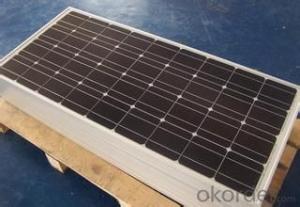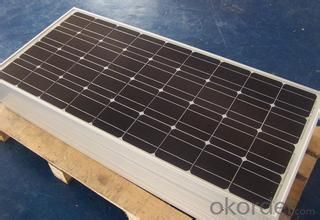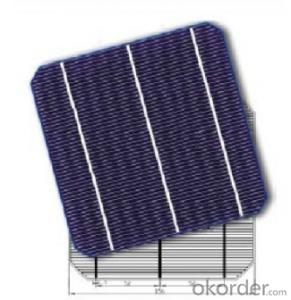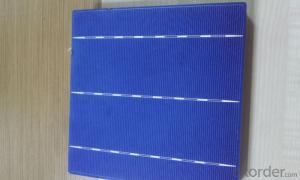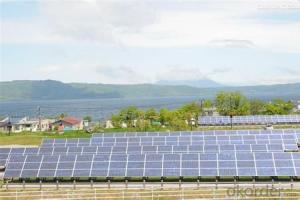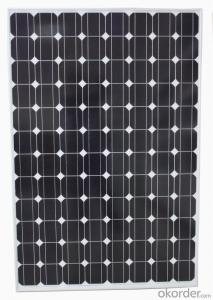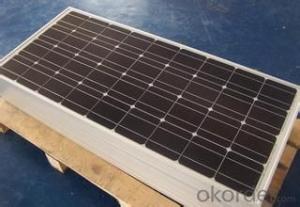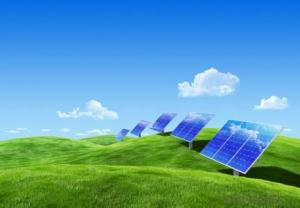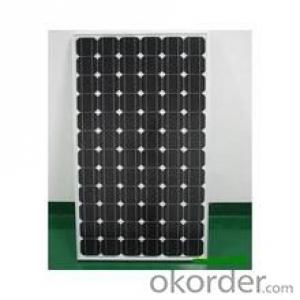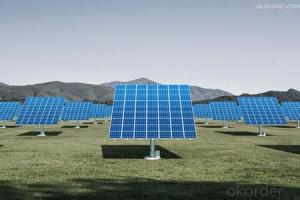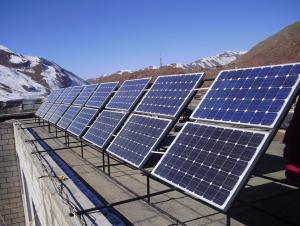NASA Monocrystalline Silicon Solar Cells 130W
- Loading Port:
- China Main Port
- Payment Terms:
- TT OR LC
- Min Order Qty:
- -
- Supply Capability:
- -
OKorder Service Pledge
Quality Product, Order Online Tracking, Timely Delivery
OKorder Financial Service
Credit Rating, Credit Services, Credit Purchasing
You Might Also Like
Quick Details
| Size: | |||||
| Max. Power: |
Specifications
Monocrystalline Silicon Solar Cells with Lowest Prices, Best Selection, Fast Shipping, Friendly Customer Service
FEATURES:
Specification
Cell: Monocrystalline Silicon Solar Cells
156mm*156mm
Dimension: 1482*676*35mm
Weight: 12kg
Characteristics
Open circuit voltage(Voc): 21.6V
Optimum operating voltage(Vmp):17.2V
Short circuit current(Isc): 8.40A
Optimum operating current(Imp): 7.56A
Maximum power at STC(Pm): 130Wp
- Q: How do solar cells impact energy security?
- Solar cells positively impact energy security by providing a reliable and sustainable source of electricity. As they generate power from sunlight, solar cells reduce dependence on fossil fuels, which are finite and contribute to environmental degradation. By diversifying the energy mix and promoting renewable energy adoption, solar cells enhance energy resilience and reduce vulnerability to price fluctuations and supply disruptions. Additionally, solar cells can be deployed in remote areas, increasing access to electricity and improving energy security for off-grid communities.
- Q: Doping and Diffusion Principle in Solar Cell Processing
- The doping of semiconductors mainly relies on the principle of ion diffusion from high concentrations like low concentrations.
- Q: Can solar cells be used for powering electric fences?
- Yes, solar cells can be used for powering electric fences. Solar cells convert sunlight into electricity, which can then be stored in batteries and used to power electric fences. This makes them a reliable and sustainable option for powering fences in areas without easy access to a traditional power grid.
- Q: Do you believe you can make a solar cell by using kitchenware?
- You must be joking.
- Q: Can solar cells be used to power water treatment plants?
- Yes, solar cells can be used to power water treatment plants. Solar energy can be harnessed by installing photovoltaic panels, which convert sunlight into electricity. This renewable energy source can provide a sustainable and cost-effective solution for powering water treatment plants, reducing dependence on fossil fuels and minimizing environmental impact.
- Q: What is the impact of solar cell installations on local economies?
- Solar cell installations can have a positive impact on local economies. Firstly, they create job opportunities in the installation, manufacturing, and maintenance sectors. This leads to a boost in employment rates and income generation within the community. Additionally, solar energy reduces reliance on imported fossil fuels, resulting in cost savings for both households and businesses. As a result, more money remains in the local economy, stimulating growth and supporting local businesses. Moreover, solar installations can attract investments and businesses looking to align with sustainable practices, further fueling economic development. Overall, solar cell installations contribute to job creation, cost savings, and increased investment, making a significant positive impact on local economies.
- Q: What is sun cells technology?
- The history of sun cell can be traced back to 1839, when the French physicist Becquerel Alexander-Edmond discovered the photovoltaic effect (effect Photovoltaic). Until 1883, the first selenium solar cell was made by the American scientist Fritts Charles.
- Q: How are solar cells used in agricultural applications?
- Solar cells are used in agricultural applications to generate electricity for various purposes, such as powering irrigation systems, lighting in greenhouses, and running equipment like pumps and fans. They help farmers reduce their reliance on traditional energy sources and promote sustainable farming practices.
- Q: How do solar cells compare to fossil fuels in terms of energy production?
- Solar cells are a cleaner and more sustainable source of energy compared to fossil fuels. While fossil fuels release harmful emissions and contribute to climate change, solar cells harness the power of the sun to generate electricity without any pollution. Although fossil fuels have been the dominant source of energy for decades, solar cells offer a viable alternative that is continuously improving in efficiency and cost-effectiveness.
- Q: Can solar cells be used for powering agricultural irrigation systems?
- Yes, solar cells can be used for powering agricultural irrigation systems. Solar energy can be harnessed by installing solar panels that convert sunlight into electricity, which can then be used to power pumps and other equipment necessary for irrigation. This renewable energy source offers a sustainable and cost-effective solution for powering agricultural practices, especially in areas with limited access to electricity.
Send your message to us
NASA Monocrystalline Silicon Solar Cells 130W
- Loading Port:
- China Main Port
- Payment Terms:
- TT OR LC
- Min Order Qty:
- -
- Supply Capability:
- -
OKorder Service Pledge
Quality Product, Order Online Tracking, Timely Delivery
OKorder Financial Service
Credit Rating, Credit Services, Credit Purchasing
Similar products
Hot products
Hot Searches
Related keywords
